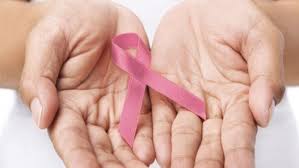Government Grants
Business Grants
Home Owner Programs
Federal Programs
About Us
National Limb Loss Resource Center
An estimated 2 million people live with limb loss/limb difference in the United States.
Each year an estimated 185,000 amputations are performed in the United States.
People with limb loss/limb difference experience many barriers to successful community reintegration and full participation in social life.
People with limb loss / limb difference perceive a reduction in their participation in recreational activities and satisfaction at work and feel more impaired in their ability to navigate their community following the amputation of their limb.
Additionally, people with limb loss/limb difference often experience anxiety and psychological distress, low rates of workforce re-entry, environmental barriers, and secondary co-morbidities associated with the amputation of a limb (e.g., back pain, arthritis).
Furthermore, individuals with limb loss report receiving little information about their rehabilitation from their healthcare provider either before or after their amputation.
Through this funding opportunity announcement, ACL plans to award one (1) cooperative agreement for a National Limb Loss Resource Center to ensure the availability of, and access to, the most comprehensive, high quality information and supports for people of all ages living with limb loss/limb difference, their families, and their caregivers.
As the number of individuals that experience limb loss increases and the cost of healthcare rises, it is important to ensure that individuals affected have access to the most current, relevant information and supports so that they can make the choices that will benefit their physical and emotional health and overall quality of life.
The National Limb Loss Resource Center will:
Increase supports and resources available to people living with limb loss/limb differences, their families, and the caregivers through a robust national website containing a wide variety of resources for individuals and families looking for information following an amputation or while growing up with limb differences.
Provide educational opportunities, activities, and outreach to all people living with limb loss/limb differences, their families, and their caregivers regardless of age, location, or gender.
Collaborate with federal agencies and other national organizations that have a vested interest in the limb loss and limb differences community to reach more people seeking long-term services and supports and employment information.
Ensure performance measurements are being captured to develop lessons learned and best practices.
Each year an estimated 185,000 amputations are performed in the United States.
People with limb loss/limb difference experience many barriers to successful community reintegration and full participation in social life.
People with limb loss / limb difference perceive a reduction in their participation in recreational activities and satisfaction at work and feel more impaired in their ability to navigate their community following the amputation of their limb.
Additionally, people with limb loss/limb difference often experience anxiety and psychological distress, low rates of workforce re-entry, environmental barriers, and secondary co-morbidities associated with the amputation of a limb (e.g., back pain, arthritis).
Furthermore, individuals with limb loss report receiving little information about their rehabilitation from their healthcare provider either before or after their amputation.
Through this funding opportunity announcement, ACL plans to award one (1) cooperative agreement for a National Limb Loss Resource Center to ensure the availability of, and access to, the most comprehensive, high quality information and supports for people of all ages living with limb loss/limb difference, their families, and their caregivers.
As the number of individuals that experience limb loss increases and the cost of healthcare rises, it is important to ensure that individuals affected have access to the most current, relevant information and supports so that they can make the choices that will benefit their physical and emotional health and overall quality of life.
The National Limb Loss Resource Center will:
Increase supports and resources available to people living with limb loss/limb differences, their families, and the caregivers through a robust national website containing a wide variety of resources for individuals and families looking for information following an amputation or while growing up with limb differences.
Provide educational opportunities, activities, and outreach to all people living with limb loss/limb differences, their families, and their caregivers regardless of age, location, or gender.
Collaborate with federal agencies and other national organizations that have a vested interest in the limb loss and limb differences community to reach more people seeking long-term services and supports and employment information.
Ensure performance measurements are being captured to develop lessons learned and best practices.
Agency: Department of Health and Human Services
Office: Administration for Community Living
Estimated Funding: $3,292,907
Office: Administration for Community Living
Estimated Funding: $3,292,907
Who's Eligible
Obtain Full Opportunity Text:
https://www.acl.gov/grants/applying-grants
Additional Information of Eligibility:
Domestic public or private non-profit entities including state and local governments, Indian tribal governments and organizations (American Indian/Alaskan Native/Native American), faith-based organizations, community-based organizations, hospitals, and institutions of higher education.
Foreign entities are not eligible to compete for, or receive, awards made under this announcement.
Full Opportunity Web Address:
https://www.acl.gov/grants/applying-grants
Contact:
Agency Email Description:
Grants Policy
Agency Email:
Date Posted:
2018-12-17
Application Due Date:
Archive Date:
2019-03-17
Social Entrepreneurship
Spotlight
When it Comes to Social Enterprises, Failure is the Best Platform for Innovation

In the world of social enterprises, failure is a cringe-worthy moment nobody wants to talk about. But, social entrepreneurs can benefit from their failures.

